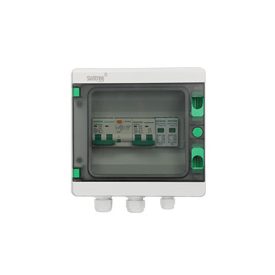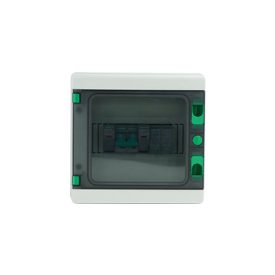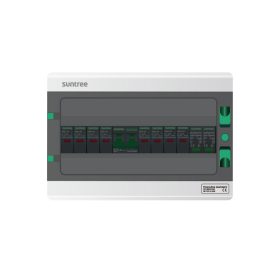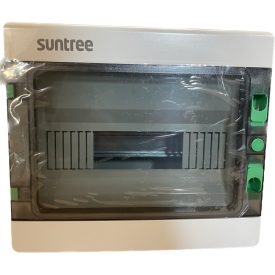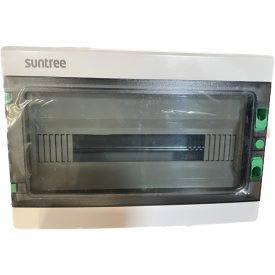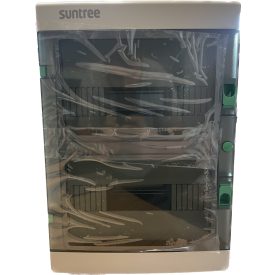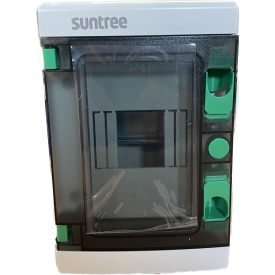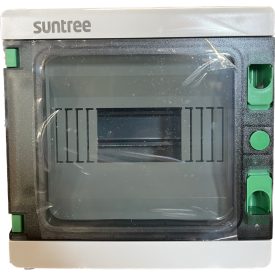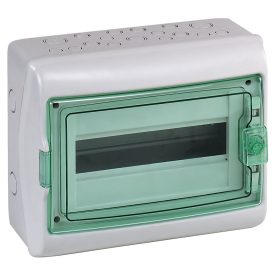PV Combiner Boxes and Distribution Boxes: Essential Components for Optimizing Solar Installations
In the rapidly evolving landscape of solar energy, the efficiency and safety of solar installations are paramount. Photovoltaic (PV) combiner boxes and distribution boxes stand out as critical components, ensuring that solar power systems operate at their peak while adhering to safety standards. These electrical enclosures play vital roles in managing and protecting the complex wiring systems of solar panels, ultimately enhancing the performance and longevity of solar installations. This comprehensive guide delves into the functions, benefits, and selection criteria of PV combiner boxes and distribution boxes, highlighting their importance in creating efficient, reliable, and safe solar power solutions.
Understanding PV Combiner Boxes and Distribution Boxes
PV combiner boxes serve as a pivotal junction point where the output from multiple solar panels is combined into a single electrical load. These boxes are equipped with overcurrent protection devices, such as fuses or circuit breakers, to safeguard the system against electrical faults. Distribution boxes, on the other hand, distribute electrical power from one source to various circuits, providing an organized and safe method for managing the electricity generated by the solar panels.
Key Features and Benefits
-
Enhanced Safety: Both PV combiner boxes and distribution boxes are designed to protect solar installations from overcurrents, short circuits, and other electrical hazards, ensuring the safety of the system and its users.
-
Improved Efficiency: By consolidating and distributing electrical flows efficiently, these components minimize energy losses, maximize the performance of solar installations, and ensure that the generated power is utilized effectively.
-
Simplified Maintenance and Troubleshooting: Equipped with monitoring capabilities, PV combiner boxes and distribution boxes allow for easier maintenance and quicker identification of issues within the solar power system.
-
Scalability and Flexibility: These boxes accommodate future expansions and adjustments to the solar installation, offering flexibility in system design and scalability to meet growing energy needs.
Choosing the Right PV Combiner Boxes and Distribution Boxes
Selecting the appropriate PV combiner box and distribution box is crucial for the optimal performance and safety of solar installations. Considerations include:
-
Current and Voltage Ratings: Ensure that the boxes are rated for the system’s maximum voltage and current to handle the electrical load safely.
-
Protection Features: Look for boxes with adequate overcurrent protection, surge protection, and grounding options to safeguard against electrical hazards.
-
Enclosure Ratings: Choose enclosures with appropriate environmental ratings (e.g., NEMA or IP ratings) to withstand the specific conditions of the installation site, such as moisture, dust, and temperature extremes.
-
Compatibility and Integration: The selected boxes should be compatible with the other components of the solar system, including inverters and monitoring equipment, to ensure seamless integration and operation.
Installation and Maintenance
Proper installation and regular maintenance of PV combiner boxes and distribution boxes are essential for the long-term reliability and efficiency of solar installations. Installation should be performed by qualified professionals, adhering to national and local electrical codes. Regular inspections and maintenance, including checking for loose connections, verifying the integrity of protective devices, and ensuring enclosures are secure and weather-tight, are critical for optimal performance and safety.
The Future of PV Combiner Boxes and Distribution Boxes in Solar Energy
As solar technology advances, PV combiner boxes and distribution boxes are evolving to offer smarter, more integrated solutions. Future developments may include enhanced monitoring capabilities, remote diagnostics, and automation features that further improve the efficiency, safety, and manageability of solar installations. The integration of these advanced features will play a crucial role in meeting the increasing demand for renewable energy and supporting the growth of the solar industry.
Conclusion
PV combiner boxes and distribution boxes are indispensable components of modern solar installations, playing key roles in ensuring the efficiency, safety, and scalability of solar energy systems. By understanding the functions, benefits, and selection criteria of these essential components, solar project developers, installers, and end-users can make informed decisions that maximize the performance and reliability of their solar installations. As the solar industry continues to advance, the importance of these electrical enclosures in facilitating the widespread adoption of solar energy cannot be understated, marking a bright future for renewable energy solutions.
FAQs
-
How often should PV combiner boxes and distribution boxes be inspected? Regular inspections, ideally annually, are recommended to ensure that all components function correctly and to address any potential issues before they escalate.
-
Can PV combiner boxes and distribution boxes be used in off-grid solar systems? Yes, these components are essential in both grid-tied and off-grid solar systems, facilitating efficient power management and protection in various installation types.
-
What is the difference between a PV combiner box and a distribution box? While both serve to manage and protect electrical flows in solar installations, PV combiner boxes specifically combine the output of multiple solar panels into a single load for the inverter, whereas distribution boxes distribute electrical power from one source to multiple circuits.

